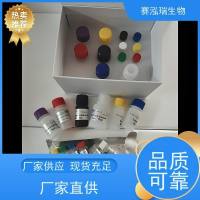Methods for Protein Characterization by Mass Spectrometry, Thermal Shift (ThermoFluor) Assay, and Multiangle or Static Light Scattering
互联网
互联网
相关产品推荐

层粘连蛋白γ2(LAMγ2)检测试剂盒B2T; EBR2; EBR2A; LAMB2T; LAMNB2; Kalinin/nicein/epiligrin 100 kDa subunit; Cell-scattering factor 140 kDa subunit; Ladsin 140 kDa; Large adhesive scatter factor 140 kDa
¥800

Recombinant-Hordeum-vulgare-High-molecular-mass-early-light-inducible-protein-HV58-chloroplasticHigh molecular mass early light-inducible protein HV58, chloroplastic; ELIP
¥10556

HB Western blotting Principles and Methods
¥223

Coronavirus Nucleocapsid重组蛋白|Recombinant SARS-CoV-2 Nucleocapsid-AVI&His recombinant Protein,Biotinylated
¥4520

Acid-fast stain kit (Ziehl-Neelsen thermal dyeing)(S0230)-3×50ml
¥200
相关问答

